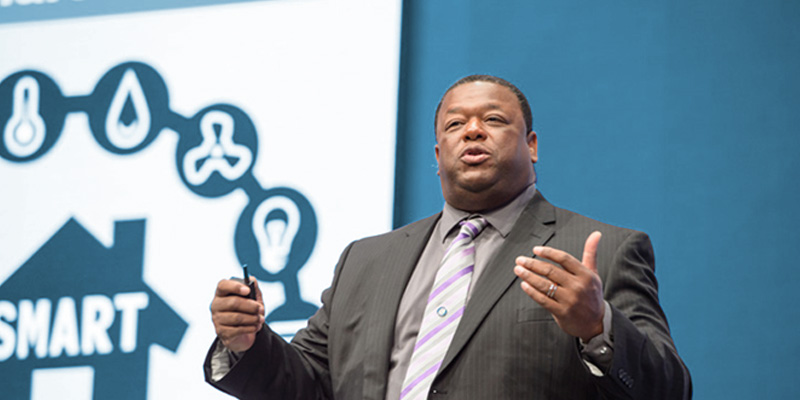At the Gartner Symposium/ITxpo 2016 in October, Daryl Plummer, vice president and Gartner Fellow, discussed how Gartner’s Top Predictions begin to separate us from the mere notion of technology adoption and draw us more deeply into issues surrounding what it means to be human in a digital world.
Gartner’s Top Predictions
1. Robo-writers create content
By 2018, 20 percent of business content will be authored by machines. Content that is based on data and analytical information will be turned into natural language writing by technologies that can proactively assemble and deliver information through automated composition engines. Content currently written by people, such as shareholder reports, legal documents, market reports, press releases and white papers are prime candidates for these tools.
2. Things will need help
By 2018, 6 billion connected things will be requesting support. In 2021, 1 million new IoT devices will be purchased every hour of every day. What happens when they require help and support? Organisations will need to develop strategies and mechanisms for responding to things in different ways than when communicating with and problem-solving for people.
3. Agents get independence
By 2020, autonomous software agents outside of human control will participate in 5 percent of all economic transactions. Algorithmically driven agents already participate in our economy, but are tethered to mechanisms controlled by humans in our corporate, legal, economic, and fiduciary systems. In what Gartner calls the programmable economy, new autonomous software agents will hold value themselves and be set free on the blockchain, capable of banking, insurance, exchanges, and all other types of financial instruments.
4. You work for a robo-boss
By 2018, more than 3 million workers globally will be supervised by a “robo-boss.” Some performance measurements can be consumed more swiftly by smart machine managers aka “robo-bosses,” who will perform supervisory duties and make decisions about staffing or management incentives.
5. Smart buildings are vandalised
By year-end 2018, 20 percent of smart buildings will have suffered from digital vandalism. Digital vandals will plunge buildings into darkness or deface signs in exploits that may be more nuisance than threat, but which require adequate perimeter security and a strategy that links building security with the larger organisational security process.
6. More smart machines go to work
By 2018, 45 percent of the fastest-growing companies will have fewer employees than instances of smart machines. It will happen with start-ups and new companies first, but the speed, cost savings, and productivity improvements of employing smart machines means that some companies will use machines over human workers, such as in a fully automated supermarket, robotic hotel, or security firm with drone-only surveillance services.
7. Customer digital assistants hold conversations
By year-end 2018, customer digital assistants will recognise individuals by face and voice across channels and partners. Multichannel customer experience will take a big leap forward with seamless, two-way engagement between customer digital assistants and customers in an experience that will mimic human conversations, with both listening and speaking, a sense of history, in-the-moment context, tone, and the ability to respond.
8. Employees wear trackers
By 2018, 2 million employees will be required to wear health and fitness tracking devices as a condition of employment. For people whose jobs can be dangerous or physically demanding, wearable devices can provide remote monitoring of heart rates, respiration, and potentially, their stress levels, to send help immediately if required.
9. Smart agents manage our tasks
By 2020, smart agents will facilitate 40 percent of mobile interactions, and the post-app era will begin to dominate. Instead of using discreet apps, we’ll rely on smart agents in the form of Virtual Personal Assistants (VPA) or newly built business agents to predict our needs, build trust, and act autonomously on our behalf.
10. Customers cause cloud failures
Through 2020, 95 percent of cloud security failures will be the customer’s fault. Many organisations still harbour security concerns about the use of public cloud services. However, only a small percentage of security incidents impacting enterprises using the cloud have been due to vulnerabilities that were the provider’s fault. Customers increasingly will use cloud access security brokers products to manage and monitor their use of SaaS and other forms of public cloud services.
For more information on the Gartner event and predictions, visit www.gartner.com. To understand the impact (and the opportunities) these trends can present, contact the blueAPACHE Account team to discuss how you can leverage agile technology for your business benefit.

